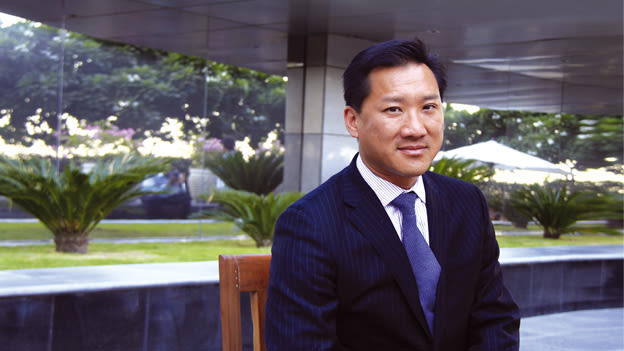HR needs to be more quantitative

HR needs to push, which is discovering new things, making sure we have different roles, are driven by the numbers and understanding and testing things out and not leaving it to guesswork
You have been in the field for over 20 years now. Could you give me an overview of your time in the HR field and tell me what have been your key learnings through all these years?
In the last couple of decades, HR has changed quite a bit. I don’t think it is because of the profession, I think it is because of the things around the profession. People sometimes tell us that you have the office on your hip! Evidently, everything changes because of technology. It helps us to share knowledge across borders and organizations and also knowledge is everywhere and anywhere. The tools and the way we go about the trade and craft of managing people has undergone a drastic change. What’s essential in the HR function is that what it can do to create value. But, I don’t know if we are developing HR professionals fast enough to meet those expectations. As organizations grow in a VUCA environment, HR is still doing the same thing. We need to understand how work gets accomplished now. Maybe the elements we do in HR is the wrong set of things to do. Maybe a job is just working two or three years now. The tools that we have today are the same set that were used in the 1940s, 1950s and 1960s. I think organizations have completely changed in how do they do jobs. So, we need to better adapt to how we do our job and it is not what we learnt before but figuring out what better things we can do and that has to do with leadership, business acumen, navigation etc. Now, it is not good enough to surround yourself with good HR people; you have to get great HR people who can create value for the organization and that’s the big difference.
When you talk about leadership in HR, who drives that: Is it the HR itself or the business leader?
In many organizations, it comes from both sides. I hope it comes from HR more and more and I know we are trying to build business leaders like that. But, many Heads of HR don’t have HR backgrounds in big companies. They choose a person outside HR to lead HR, which I think is not a great practice. The best thing to do would be to put them in P/L or operations. Many search firms look for HR leaders who have P/L responsibility. So from a development standpoint, most HR leaders grow within the function and hence do not get the P/L exposure. It is very important for HR leaders to step out of their comfort zone and do rotations across organizations. The organizations that want a bench strength of executive people will rotate the top people, including the Head of HR. HR needs to help develop HR leaders be better business leaders. In an interesting recent study, it was shown that the CHRO has the most model personality close to a CEO. Yet CFOs & COOs become CEOs because of the money aspect of it. If you take a look at the Fortune 500 companies, it is not the capital that got them there; it is the people. Organizations understand that the sustainable competitive advantage is the people, its culture and its promise to the customer and how you deliver on that. Everything else is just a commodity. People is the only thing you can affect, while everybody has time and money. The focus of the organization should be on its team and its culture versus can we outspend or take it to the market quickly. The job of the HR is not just to get people, but get people to up their game and get phenomenal results with them as a group than just individuals.
HR is a function that manages people. So why do they say that the focus should be on people irrespective of how technology is changing the processes?
There are certain tools and trades that we have as people. We need to make sure that everyone is equipped with the planning aspect to deploy people for managers. What do you need? Who are your people? How are you developing them? How do you create that performance culture? If you take a look at winning organizations, you will find 9 times out of 10 that people who rise to the top are the people who build a sticky culture. These people are actually ingrained in what they are doing versus not being involved at all. Those are basic building blocks for HR. There is a correlation between CEO turnover and CHRO turnover. That’s because CEOs need their own person to shape the organizational culture. Culture emanates from a CEO, but it’s implemented by the CHRO and the business leaders. The CHRO keeps them honest, on track and is a good sounding board.
What are the trends or capabilities that new-age HR leaders need?
HR needs to be more quantitative like have more Big Data and business analytics because that is what businesses require. Any organizational leader wants to harness the power of data set relationships in the business. Whether it is CRM or supply chain, business leaders always look at ways of making it more efficient and effective. We need to make sure we have the tools and also become data first. We need to make sure we just don’t have assumptions and test it out, asking questions and being curious. In some of the companies I have worked with the mantra is ‘Break everything and fail fast’. HR needs to push, which is discovering new things, making sure we have different roles and are driven by the numbers and understanding and testing things out and not leaving it to guesswork. We need to also improve our critical thinking capabilities in terms of what creates value for winning organizations. We need to rewire and retool. Through SHRM’s competency model, we are telling HR professionals around the world the skillsets that they need to start developing – business acumen, leadership, consultative skills and critical thinking. It’s not just about knowing HR, but about applying critical thinking, consultative skills, navigation skills. When you do these things at a higher rate, it relates to organizational performance or making the data link between performance and how you score on these parameters. What we are doing is linking organizational performance with the competency models. If people perform better on the competency scales, does it relate to organizational performance? That is what we are looking at – statistical relationships between these two. Leadership and navigation should be a universal knowledge and skill for organizational performance.
Dr. Pon has over 20 years of experience in leading organizations and transforming talent management in the private and public sectors. Dr. Pon has co-authored and developed national Human Resource standards with the Corporate Leadership Council, the National Academy of Public Administration, and Booz Allen Hamilton











